Orca Slicer
Orca Slicer v2.3.1 is free, open-source 3D printing software based on Bambu Studio. It delivers fast slicing and precise G-code. What if I gave you software that could bring your printer to life software that helps your 3D printer create things that actually change your life? Imagine turning your digital designs into real, tangible creations right in front of your eyes. That’s exactly what Orca Slicer does.
My own experience has been amazing. I feel like I’m living in both the digital world and the real world at the same time, and this has really helped me.
If you also want to change your life like I did, then download the software right now from the Orca Slicer official website and bring your printer to life through it.
This software is developed by SoftFever and is based on Bambu Studio. Its high-quality printing will definitely impress you, as it uses G-code to print exactly the way you want.

There are many printers and slicer programs available, but what makes Orca Slicer 2.3 1 special is that it has automatic setup tools. Orca Slicer Download v2.3.1 is free 3D printing slicer, open-source 3D printing software based on Bambu Studio. It delivers fast slicing and precise G-code. These tools handle things like flow, temperature, and retraction settings, making setup easy and results consistent. It’s an excellent choice for design and 3D printing. Orca works by slicing (cutting) your digital 3D model into layers and creating detailed instructions for your printer. This helps you get precise, smooth, and strong prints.
You can download Orca Slicer completely free an open source Next-Gen Slicing Software for Precision 3D Prints with just one click from the orca slicer github link below. It works great on Windows, macOS, and Linux computers. You’ll find the latest versions there. These updates include new features, bug fixes, and performance improvements. Just choose the right latest version for your computer, download it, install it—and enjoy fast, better, and high-quality 3D printing with the latest updates.
Orca Slicer v2.3.1 – Highlights (Released 05-October-2025)
- Fixed printer model regression for Prusa MK3S & MINI.
- Enhanced G-code handling for smoother Z-axis movement.
- Fixed crash when importing 3MF geometry-only files.
- Updated translations (Turkish, Portuguese, German).
- Added new printer profiles: Sovol SV08 MAX, Flyingbear, Rolohaun Delta Flyer.
- Revamped Orca Updater and build workflow.
- Fixed 999+ CMake and compiler warnings.
(Source: Official GitHub release by @SoftFever)
Also Read: Orcaslicer Wiki
How to Download Orca Slicer?
You can download Orca Slicer from its Download page. Simply choose the version that matches your operating system — Windows (.exe), macOS (.dmg), or Linux (.AppImage) then download and install it following the on-screen steps. It’s quick, safe, and verified with GitHub’s digital signature, ensuring a smooth setup for all users.
Steps to Install Orca Slicer on Windows 10 or Later
Orca Slicer download link Windows 10 and newer versions, including the latest Windows 11 builds.
- Download the
.exeinstaller file from the download page. - Right-click the downloaded file and select “Open” to start the installation.
- Follow the on-screen steps: Next → I Agree → Install → Finish.
- If Orca Slicer does not start, install or repair Microsoft Visual C++ Redistributables.
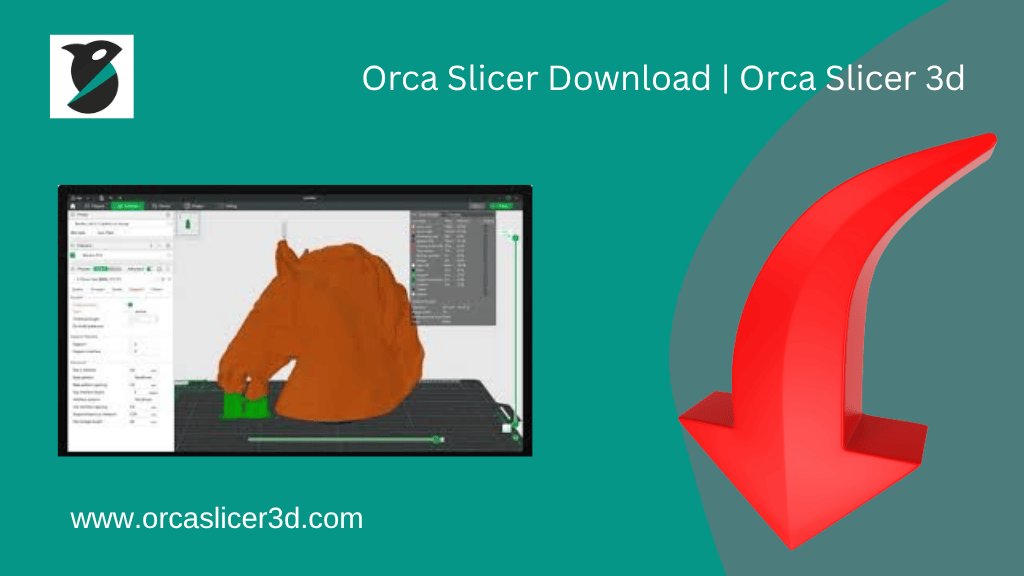
For Windows 11 Users:
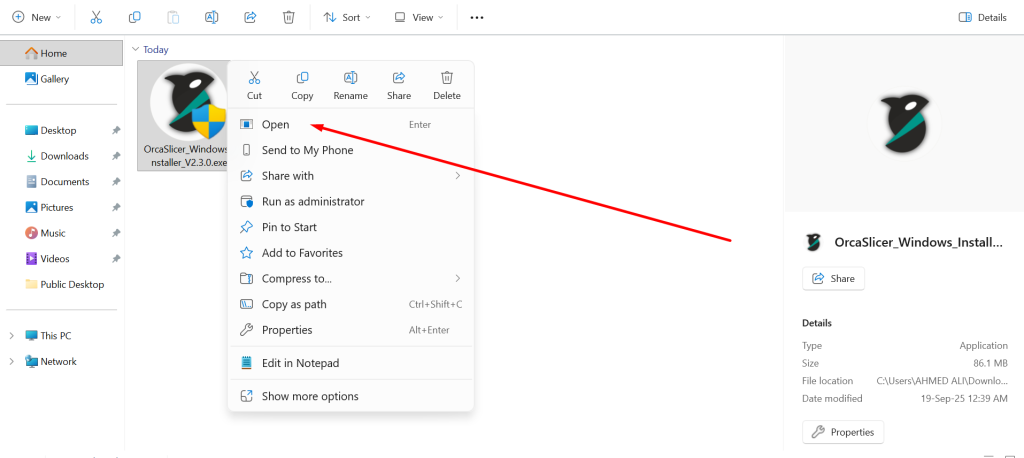
Right-click the Orca Slicer setup file and select “Open” to start the installation.
To start the Orca Slicer install, open the Orca Slicer Setup window. Click Next to proceed.
Next, you’ll see the License Agreement. Read through it, then click I Agree to accept the terms.
Choose the Install Location where you want Orca Slicer to be installed. You can use the default location or change it as needed. Click Next to continue.

You’ll be asked to choose a Start Menu Folder for Orca Slicer shortcuts. If you don’t want shortcuts, you can uncheck the option. Click Next to continue.

Click Install to start the installation process. Wait for it to finish.

Once the installation is complete, you’ll see the Completing OrcaSlicer Setup screen. Click Finish to finalize the process.

After installation, you can launch Orca Slicer from the Desktop shortcut or the Start Menu. The installation is complete, and you’re ready to use Orca Slicer!e
For macOS Users:
If you are using a Mac, download the .dmg file from the same releases page.
After the file is downloaded, open it and drag the Orca Slicer app into your Applications folder.
The first time you launch it, macOS may block the app for security reasons.
In that case, go to System Settings → Privacy & Security, and manually allow the app to run.
For Linux Users:
Linux users should download the .AppImage file for Orca Slicer.
Once the file is downloaded, open a terminal window and navigate to the folder where it was saved.
Run the following command to make it executable:
After that, simply run the file to start the application.
This quick process works on most popular Linux distributions like Ubuntu, Fedora, and Debian.
Also Read: Orca Slicer Not Working?
What is Orca Slicer? (Overview & Latest Updates)
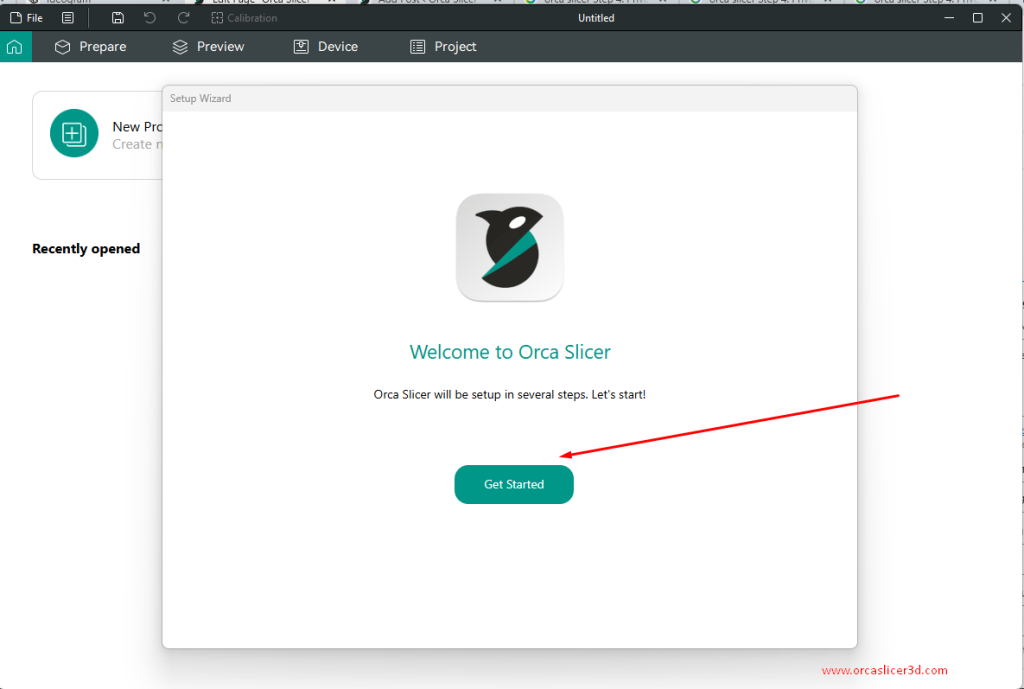
Orca Slicer is a simple and powerful converts 3D models into G-code printing slicer.
It works well for beginners, hobbyists, and professionals.
The software is built on bambu labs slicer but comes with extra features, built-in calibration tools, and support for many printers, not just Bambu Lab.
Who Should Use Orca Slicer
- Beginners who want a quick setup and reliable, high-quality prints.
- Intermediate users looking for more control and advanced tools.
- Professionals and makers using Klipper, Marlin, or popular brands like Prusa firmware, Anycubic, and Creality.
Latest Version and Updates
Orca Slicer is an open-source project that receives regular updates and improvements from its active developer and user community.
It was originally created by SoftFever in 2023 as a fork of Bambu Studio, and has quickly grown thanks to its powerful features and beginner-friendly calibration tools.
The newest version, OrcaSlicer v2.3.1 (Released October 2025), brings these key improvements:
- Extra Solid Infill:
Add extra solid layers at specific heights to reinforce parts without changing the entire infill pattern.
Perfect for strengthening mounting points or high-stress areas. - Improved Infill Rotation:
Clearer controls for sparse infill direction, avoiding conflicts and improving print consistency. - Bug Fixes:
Fixes issues like rectilinear infill optimization problems and export errors when saving printer config bundles. - UI/UX Enhancements:
G-code viewer upgrades, better scaling for icons, crash fixes, and smoother navigation. - Profiles & Localization Updates:
New and optimized printer profiles for brands like Qidi, Phrozen, and FlyingBear, plus translation updates in multiple languages.
Why Choose Orca Slicer
Orca Slicer combines ease of use, powerful features, and a supportive community.
It’s great for anyone who wants to simplify 3D printing while getting accurate and consistent prints.
Whether you’re just starting or already experienced, Orca Slicer gives you the tools to print better and faster.
Note: Orca Slicer supports multiple languages, including English, German, French, Spanish, Brazilian Portuguese, and Traditional Chinese. As an open-source project licensed under the GNU Affero General Public License v3.0, it is completely free to use, modify, and distribute.
Stable vs Beta vs Nightly Build – What’s the Difference?
Stable Build (Recommended):
The most reliable version of Orca Slicer, perfect for everyday 3D printing.
It has been fully tested and is ideal for beginners or anyone who needs consistent, trouble-free prints.
Current Stable Version: v2.3.1 (Released October, 2025)
Beta Build (Preview):
An early look at upcoming features and improvements before they are finalized.
It may include minor bugs or unfinished tools, so it’s best suited for experienced users who want to test new features.
Current Beta Version: v2.3.1-beta (Released September 2025)
Nightly Build (Experimental):
Automatically generated builds that include the very latest code changes.
These versions may be unstable or contain serious bugs, making them suitable only for developers and advanced testers.
Verified GitHub Releases
All official Orca Slicer downloads are published on GitHub and come with a verified digital signature.
This ensures the files are authentic and safe, created directly by the official developers.
- Look for the green “Verified” badge on GitHub — it confirms that the release was signed securely using GitHub’s GPG key.
- Always check this badge before downloading to make sure your version has not been altered or tampered with.
- Official tags and signed commits can be found here: View on GitHub
Tip: If you don’t see the green Verified label, do NOT download the file — it may be unsafe.
Example of Verified Badge on GitHub:
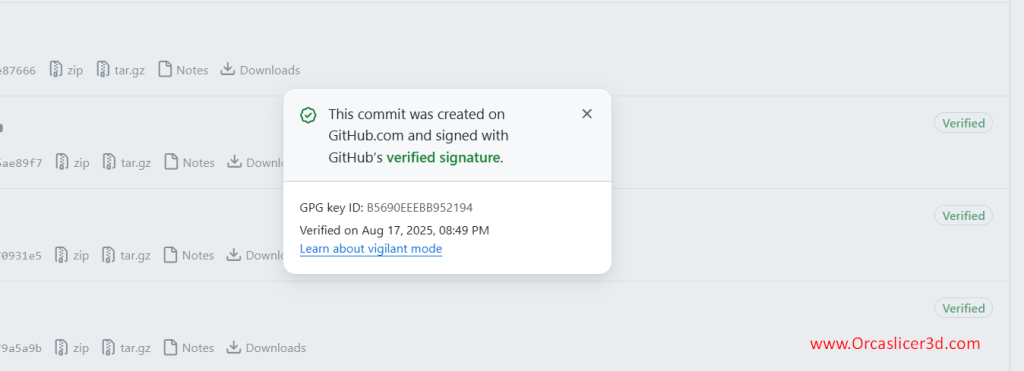
Orca Slicer Overview, Steps , Setup Guide and Benefits
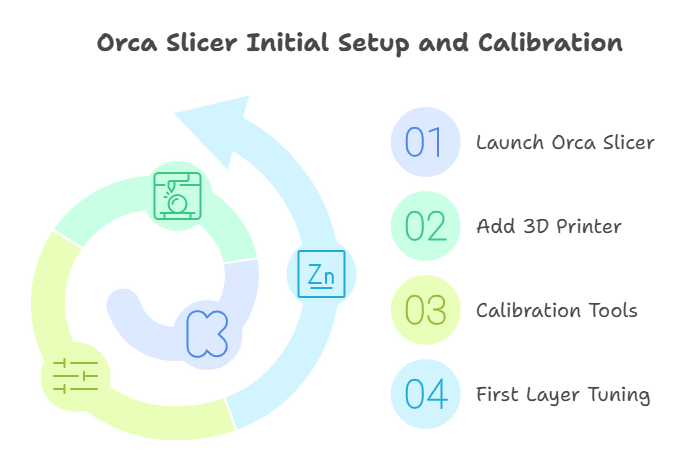
Installing and setting up Orca Slicer is simple, but sometimes users face issues during the first launch. If you encounter problems, here are quick fixes:
- MacOS – “App can’t be opened” → Go to System Settings > Privacy & Security and allow the app manually.
- Linux – Permission Denied → Open terminal, run:
chmod +x OrcaSlicer.AppImage ./OrcaSlicer.AppImage - Windows – Crash on Start → Install or repair Microsoft Visual C++ Redistributables.
Once the installation is complete, you can move on to the initial setup and calibration. Orca Slicer makes this process beginner-friendly with a guided wizard:
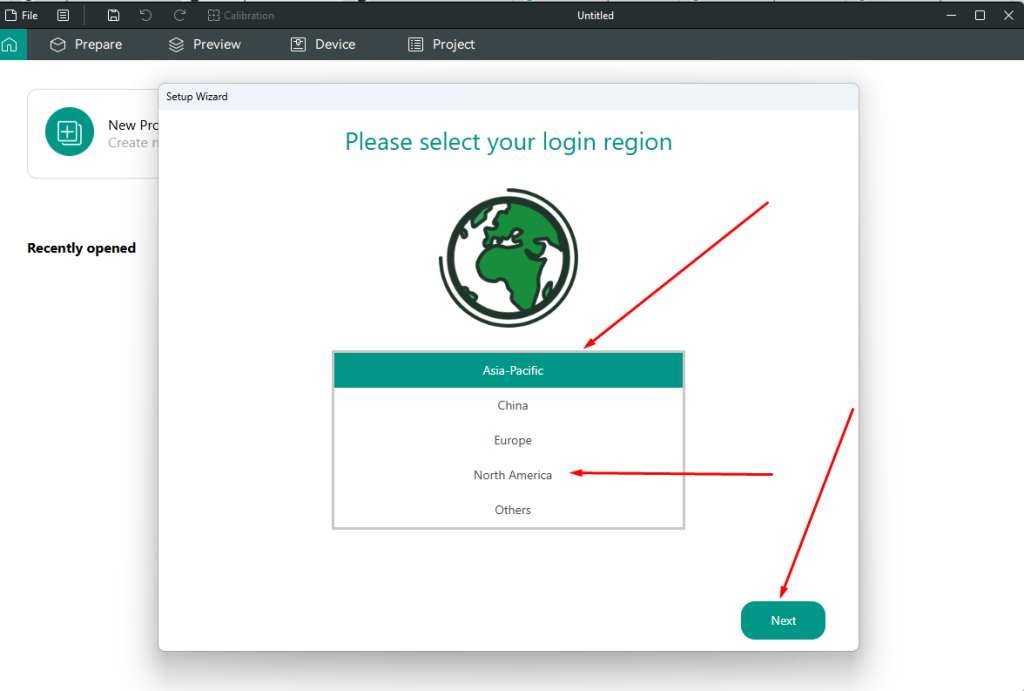
- Add Your 3D Printer – Supports bambu lab app, Anycubic Kobra, Elegoo cura Neptune, Creality Ender series, Voron, and more. You can also manually add custom printers running on Klipper, Marlin, etc.
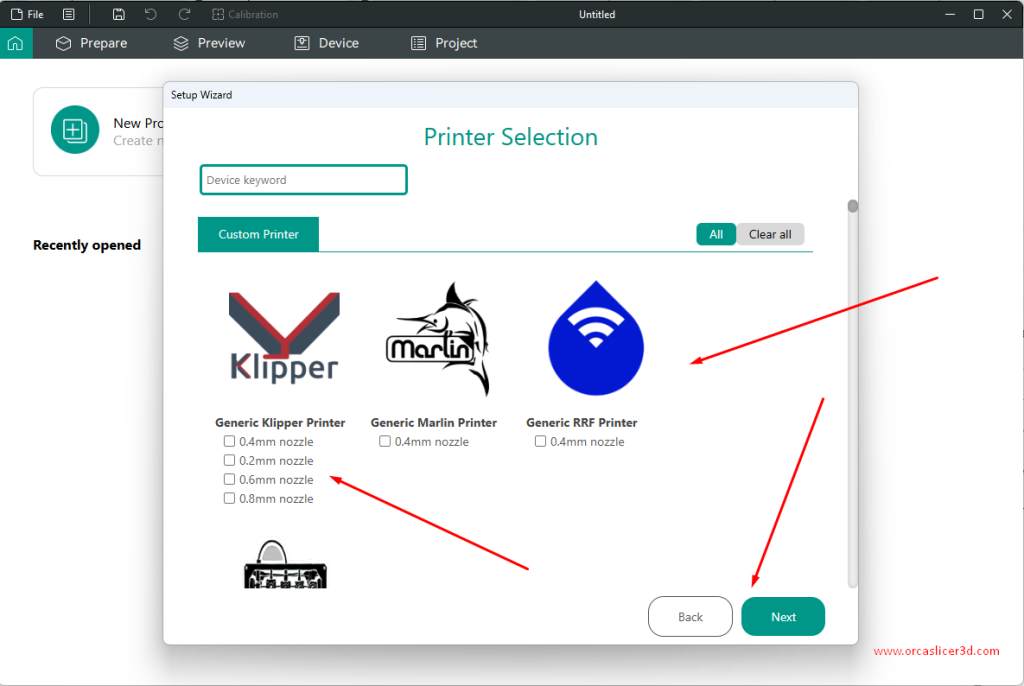
- Calibration Tools – Built-in tests for Pressure Advance, Input Shaping, Temperature Towers, Retraction, and Adaptive Bed Mesh (to handle uneven or warped beds).
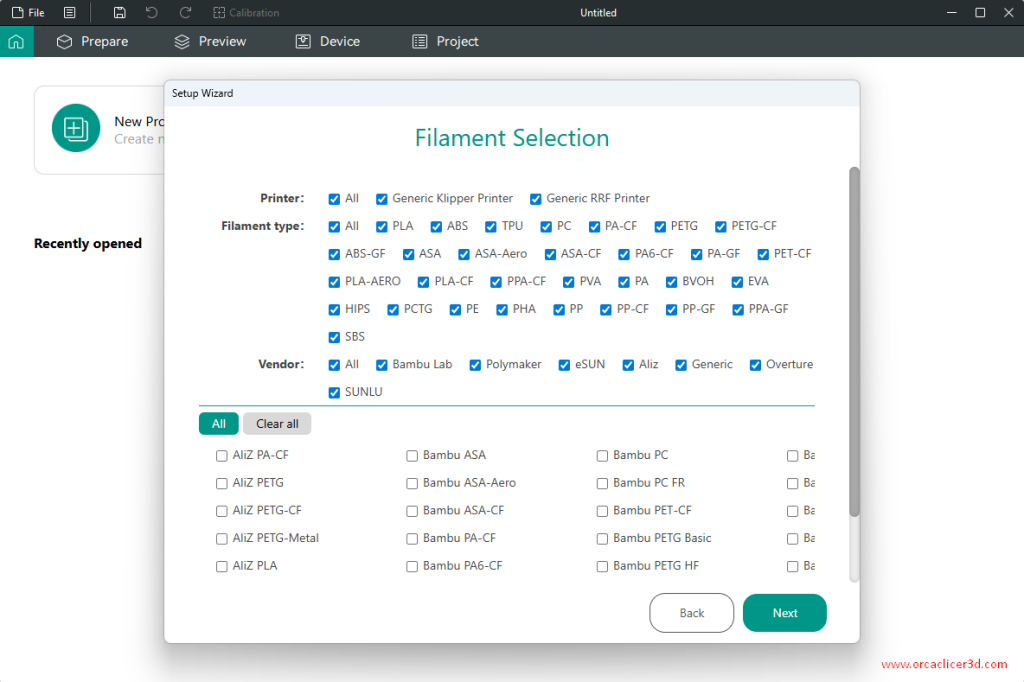
- First Layer & Z Offset Tuning – Simple visual tools and test prints make it easy to achieve the perfect first layer.
With these steps completed, Orca Slicer is ready to deliver accurate and high-quality 3D prints right from your first project.
If you face problems during installation or setup, here are some quick solutions:
- Windows Crash on Startup: Install or repair Microsoft Visual C++ Redistributables.
- Mac Security Block: Go to System Settings → Privacy & Security and allow Orca Slicer manually.
- Linux Permission Errors: Use this command:
chmod +x OrcaSlicer.AppImage ./OrcaSlicer.AppImage - Stringing Issues in Prints: Adjust retraction settings using Orca Slicer’s built-in calibration tools.
Top Orca Slicer Features
| Feature | Detailed Description |
|---|---|
| Calibration Tools | Orca Slicer offers built-in calibration tools to fine-tune your 3D printer. It includes tests for Pressure Advance, Input Shaping, Z Offset, and more. These tools help reduce print errors and improve print quality by ensuring your printer is perfectly calibrated. |
| Printer Compatibility | Works seamlessly with a wide range of popular 3D printers, including bambu lab slicer, Prusa, Anycubic, Elegoo, Voron, Creality Ender Series, and many others. This makes it an excellent choice for both beginners and professionals using different printer models. |
| Remote Printing | Integrates with platforms like Obico, OctoPrint, Mainsail, and Fluidd, allowing you to monitor and control your printer wirelessly. This feature is perfect for users who want to manage prints remotely and receive alerts for print failures. |
| Seam Painting | Provides visual tools that let you control seam placement on your 3D models. By choosing where the seam appears, you can achieve cleaner prints and improve the overall appearance of your final product. |
| Polyhole Fix | Automatically adjusts and compensates for small holes that usually print undersized, ensuring accurate dimensions for functional parts and precision models. |
| Smart Slicing Modes | Includes advanced slicing features like Lightning Infill, Ironing, and Arachne Wall Generator. These modes help improve optimal print speed, strength, and surface finish, while reducing material usage. |
| Profile Repository | Access a large library where you can share or download ready-to-use slicer profiles for specific printers. This saves time during setup and ensures optimized print settings for different machines. |
Supported Printers
Orca Slicer comes with ready-to-use profiles for many popular 3D printers, making setup quick and easy for beginners as well as advanced users:
- Bambu Lab: X1C, P1P, A1 Mini
- Creality download: Ender 3 V2, Ender 5, CR-10 series
- Anycubic: Kobra, Vyper, Mega X
- Elegoo: Neptune 3 / 4 series
- Prusa: MK3S+, MINI, XL (with Marlin firmware)
- Others: Voron, RatRig, Tronxy, and many more community-supported printers
Tip: You can also import profiles from other slicers like Cura or PrusaSlicer using .ini or .3mf files for even more flexibility.
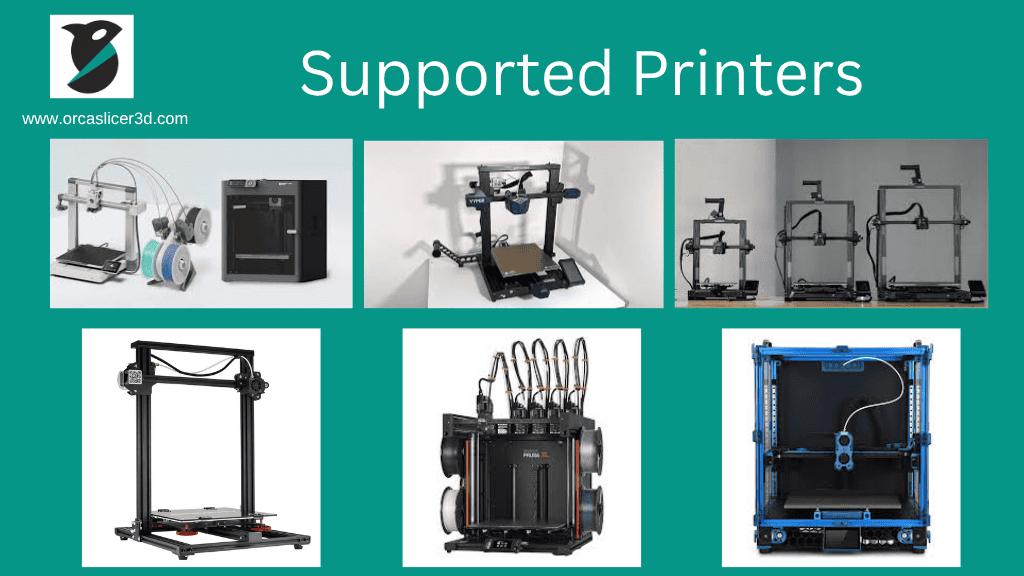
Also Read: How to Import ini Profiles to Orca Slicer
What is the difference between Orca Slicer and PrusaSlicer?
Orca Slicer and PrusaSlicer mainly differ in design focus and user experience Orca Slicer stands out as the more modern, faster, and user-friendly evolution of PrusaSlicer.
With its sleek interface, multi-plate support, built-in printer control, and smoother workflow inspired by Bambu Studio, Orca Slicer delivers a cutting-edge, efficient slicing experience that appeals to both beginners and seasoned makers.
While PrusaSlicer remains a solid professional tool with deep customization and strong multi-material support, OrcaSlicer takes the lead in optimalprint, usability, and innovation, making it the smarter choice for today’s 3D printing enthusiasts.
Also Read: orca slicer vs elegoo slicer
Best Orca Slicer Settings for Beginners
When you are just starting with Orca Slicer, setting up your printer the right way is very important.
Good preparation will help you get clean, strong, and accurate prints, even if you are new to 3D printing.
Here are a few simple steps to make your printing process smooth and trouble-free:
- Level the Print Bed
Before you start any new project, always level your print bed.
This makes sure the first layer sticks well and prevents print failures. - Start with PLA Filament
PLA is the easiest filament to work with.
It needs less calibration and gives smooth, high-quality results, making it perfect for beginners. - Use Lightning Infill
When creating test models or prototypes, Lightning Infill helps you print faster while using less filament.
This saves both time and material. - Update Your Software and Firmware
Keep Orca Slicer and your 3D printer firmware updated.
Updates often include bug fixes, new features, and performance improvements. - Run Calibration Tests Often
Calibration tests keep your printer settings accurate.
This helps you avoid stringing, layer shifting, and other common print problems. - Layer height 3d printing orca slicer
Height of layer is how thick each printed layer will be. Click Here More Info
Quick System Requirements
| Platform | OS & Version | CPU / Arch | RAM (min / rec) | GPU | Disk Space | Installer Type(s) |
|---|---|---|---|---|---|---|
| Windows | Windows 10 or later (64-bit) | Intel Core i3 or equivalent | 4 GB / 8 GB | DirectX 11 compatible | ≥ 500 MB | .exe installer, Portable (.zip) |
| macOS | macOS 10.13 or newer | Apple Silicon (M-series) or Intel 64-bit | 4 GB / 8 GB | Metal-compatible GPU | ≥ 500 MB | DMG (drag-and-drop) |
| Linux (AppImage) | Debian 10+, Ubuntu 20.04+, Mint 20+ | x86_64 (Intel/AMD) | 4 GB / 8 GB | OpenGL 3.2+ | ≥ 500 MB | AppImage (portable) |
| Linux (Flatpak – x86_64) | Ubuntu 22.04+, Fedora 39+, Debian 11+ | x86_64 (Intel/AMD) | 4 GB / 8 GB | OpenGL 3.2+ | ≥ 500 MB | Flatpak package |
| Linux (Flatpak – ARM64) | Ubuntu 22.04+, Fedora 39+, Debian 11+ | ARM64 (e.g., Raspberry Pi 5) | 4 GB / 8 GB | OpenGL 3.2+ | ≥ 500 MB | Flatpak package |
* Values consolidated from your two articles (v2.3.0 & v2.3.1 notes). 8 GB RAM recommended for best performance.
Also Read: best 3d printers compatible with orca ai
Why Beginner Settings Matter
Using the right settings is crucial for successful prints, especially if you are new to 3D printing.
Below is a simple guide to help you choose the best settings for the three most common filament types: PLA, PETG, and ABS.
| Setting | PLA (Default Filament) | PETG (Strong Prints) | ABS (Heat-Resistant) |
|---|---|---|---|
| Layer Height | 0.2 mm | 0.2 mm | 0.2 mm |
| Infill Density | 15–20% (Grid) | 20–25% (Gyroid) | 25% (Cubic) |
| Print Speed | 50 mm/s (Balanced) | 45 mm/s | 40 mm/s |
| Nozzle Temperature | 200 °C | 240 °C | 250 °C |
| Bed Temperature | 60 °C | 75 °C | 100 °C |
| Retraction | 1 mm @ 35 mm/s | 0.8 mm @ 30 mm/s | 1 mm @ 35 mm/s |
| First Layer Height | 0.24 mm | 0.24 mm | 0.28 mm |
Extra Tips for Success
- Use enclosed printers when working with ABS to prevent warping.
- PETG needs slower print speeds to avoid stringing.
- Store filaments in dry boxes to keep moisture away and maintain print quality.
- Try different infill patterns to balance strength and filament usage.
Advanced Features (For Pro Users)
Orca Slicer isn’t just for beginners — it packs advanced tools for professional users:
- Arachne Wall Generator – Generates walls with variable thickness for stronger parts.
- Lightning Infill – Extremely fast infill strategy for prototypes.
- Seam Painting – Place seams exactly where you want for cleaner surface finishes.
- Adaptive Bed Mesh Leveling – Automatically compensates for warped or uneven print beds.
- Polyhole Fix – Ensures accurate hole sizes, solving the “undersized hole problem”.
Use these when printing functional parts, prototypes, or high-detail models.
Performance Benchmarks (Community Feedback)
Slicing Speed
Many users report that Orca Slicer feels noticeably faster than other slicers, especially on complex models.
Community feedback suggests that slicing performance is often significantly quicker compared to older slicers like Cura, which makes Orca ideal for large or detailed projects.
Print Quality
Features like Seam Painting and Polyhole Fix help improve surface smoothness and dimensional accuracy.
Users often share that their prints come out cleaner, with fewer surface artifacts and more precise hole dimensions, especially when printing functional parts.
Filament Usage & Efficiency
Advanced infill strategies like Lightning Infill allow Orca Slicer to save material while maintaining strength.
This can help reduce filament costs over time, especially for prototypes and large-scale prints.
Note: These results are based on community reports and general experiences. Actual performance will vary depending on your printer model, hardware, settings, and filament type.
FAQs
Orca Slicer vs Cura, Prusa & Bambu Studio (2025 Detailed Comparison)
| Feature | Orca Slicer | Cura | PrusaSlicer | Bambu Studio | SuperSlicer |
|---|---|---|---|---|---|
| Open Source | ✅ Yes | ✅ Yes | ✅ Yes | ❌ No | ✅ Yes |
| Calibration Tools | ✅ Built-in | ❌ Plugin | ⚠️ Limited | ❌ Basic | ✅ Advanced |
| Remote Printing | ✅ Obico, OctoPrint | ❌ No | ⚠️ Partial | ✅ Native | ❌ No |
| Beginner Friendly | ✅ High | ⚠️ Medium | ⚠️ Medium | ✅ Easy | ❌ Complex |
| Speed & UI | ✅ Fast | ⚠️ Slower | ⚠️ Medium | ✅ Fast | ⚠️ Medium |
| Seam Painting | ✅ Yes | ❌ No | ✅ Yes | ❌ No | ✅ Yes |
Pros of Orca Slicer: Great for beginners, modern features, wide compatibility.
Cons: Newer than Cura/Prusa, so some niche profiles missing.
Community & Open-Source Development
One of Orca Slicer’s biggest strengths is its active open-source community:
- Over 11200 GitHub stars and 1,400 forks.
- Active Reddit & Discord communities sharing profiles, troubleshooting tips.
- Dozens of YouTube tutorials for setup & advanced printing.
This strong community support ensures Orca Slicer keeps evolving faster than many commercial slicers.
Also Read: Bambu labs firmware update | orca slicer vs bambu studio
Final Thoughts
Orca Slicer is more than just a Bambu Studio fork.
It’s a powerful, fast-evolving slicing tool that delivers precision, automation, and print quality for free whether you’re using a Bambu, Creality, Anycubic, or custom Klipper setup.
If you’re tired of Cura’s clunkiness, flashforge printers or PrusaSlicer’s limitations, give Orca Slicer a try. You’ll get better prints, smarter calibration, and a smoother overall experience.



